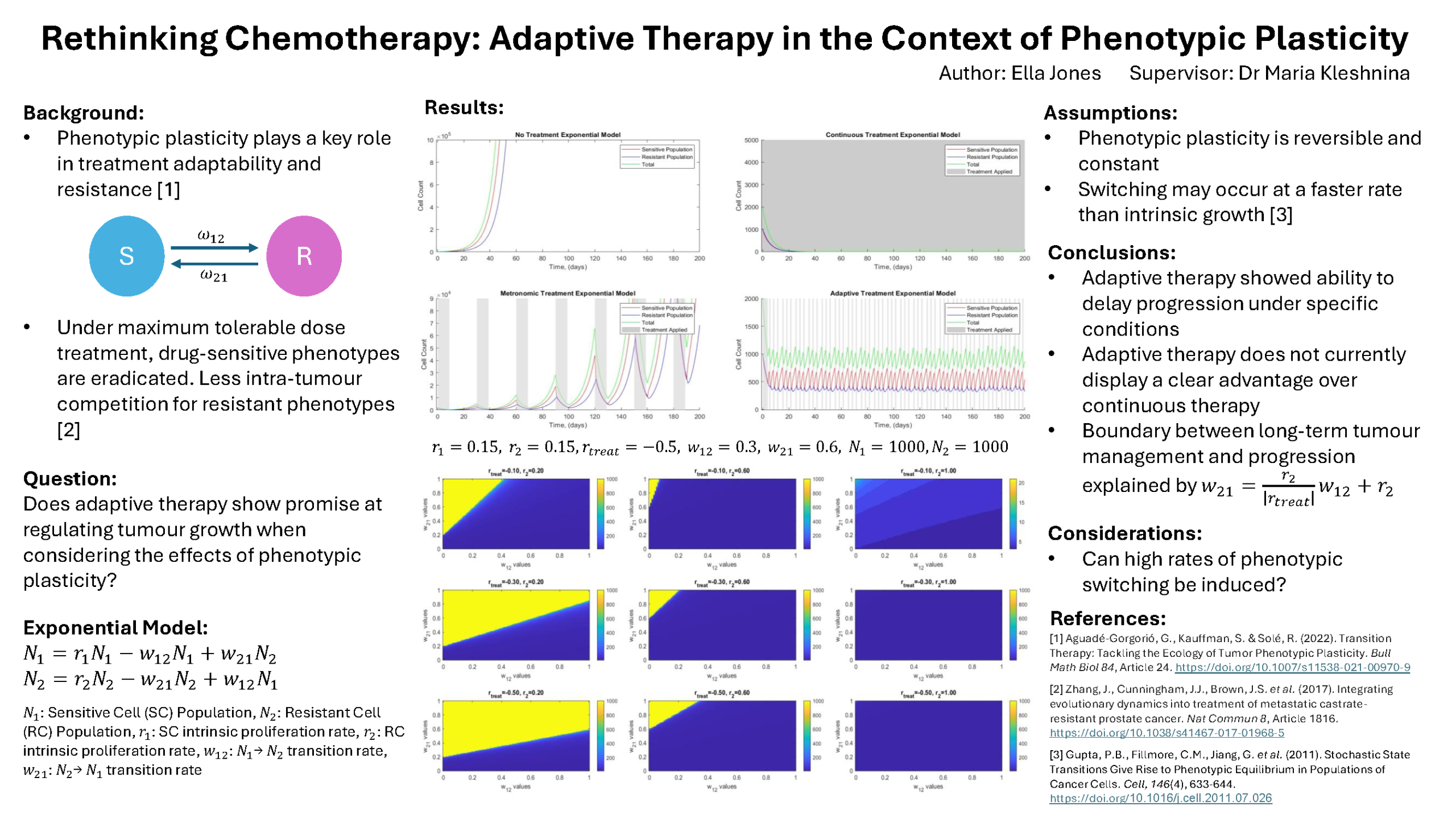Rethinking Chemotherapy: Adaptive Therapy in the Context of Phenotypic Plasticity
Ella Jones
Supervisor: Dr Maria Kleshnina
Cancer cells can adapt to their environment through phenotypic plasticity, allowing them to change their characteristics in response to treatment. This adaptability plays a key role in long-term tumour management, particularly in treatment resistance. Administering the maximum tolerable dose (MTD) of chemotherapy drugs has become a standardised approach; however, extinction of the drug-sensitive population may quickly allow for drug-resistant populations to dominate the tumour, leading to treatment resistance and failure. Adaptive therapy has been proposed as a protocol to increase the time until a tumour progresses and becomes fully resistant to treatment effects due to eradication of drug-sensitive cells. This approach involves repeatedly assessing tumour size, administering and ceasing treatment, and leveraging intra-tumour competition to prevent the extinction of the drug-sensitive population, thereby potentially extending life expectancy.
We aim to investigate whether adaptive therapy under exponential growth assumption is more effective delaying tumour progression compared to 3 other treatment protocols, and the effects of phenotypic plasticity on treatment efficacy. Using a dynamical system to predict the behaviour of a tumour in response to no, continuous, metronomic treatments and adaptive therapy, we ran numerical simulations in MATLAB to study the tumour size over time and investigate the parameter space for phenotypic switching and its effect on overall time to progression.
The results of these simulations showed that adaptive therapy could maintain tumour size under certain conditions of phenotypic switching and intrinsic cell growth rates. However, it did not demonstrate a clear advantage over continuous (MTD) therapy, which led to tumour extinction under the same parameters. While adaptive therapy does not appear to improve therapeutic outcomes for the exponential model, further investigation of a logistic model approach —potentially more reflective of the natural constraints and competition effects of localised cancers— may yield more promising results.
Media Attributions
- Rethinking Chemotherapy: Adaptive therapy in the context of phenotypic plasticity © Ella Jones is licensed under a CC BY-NC (Attribution NonCommercial) license


